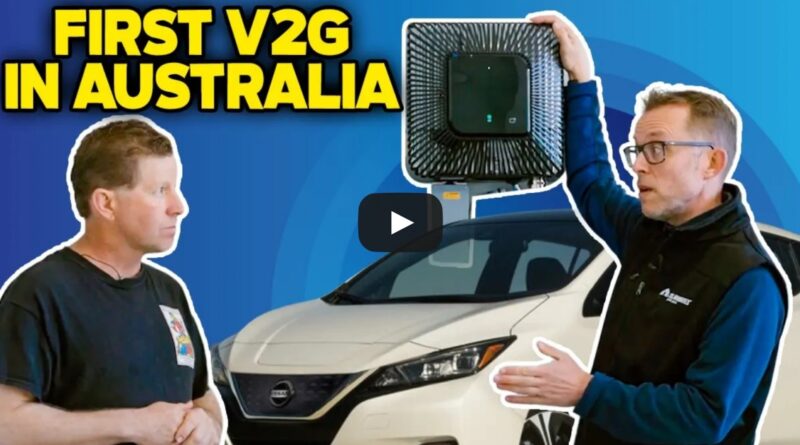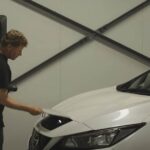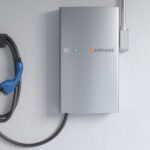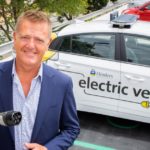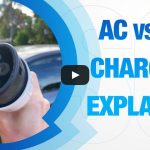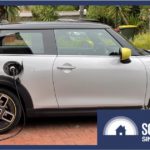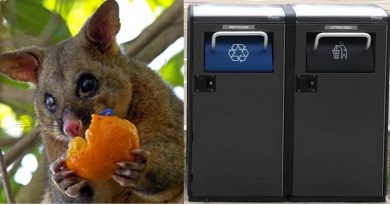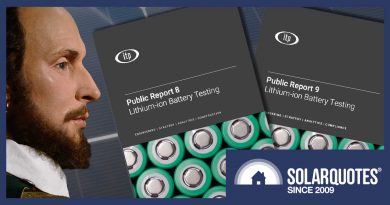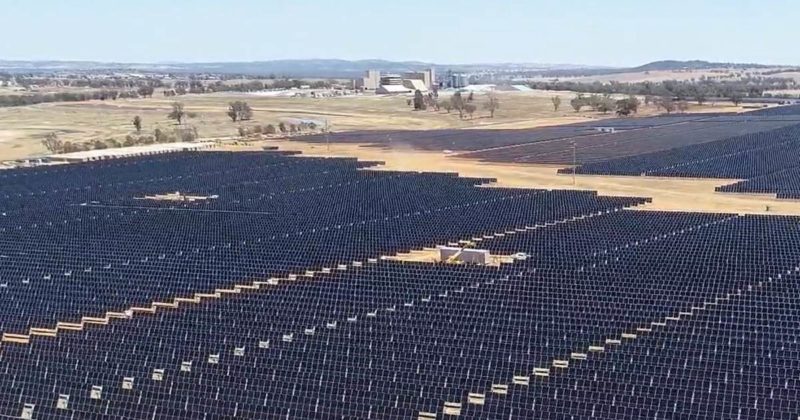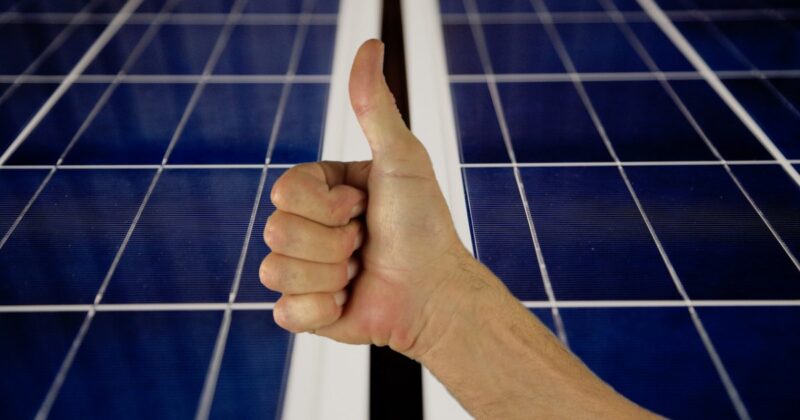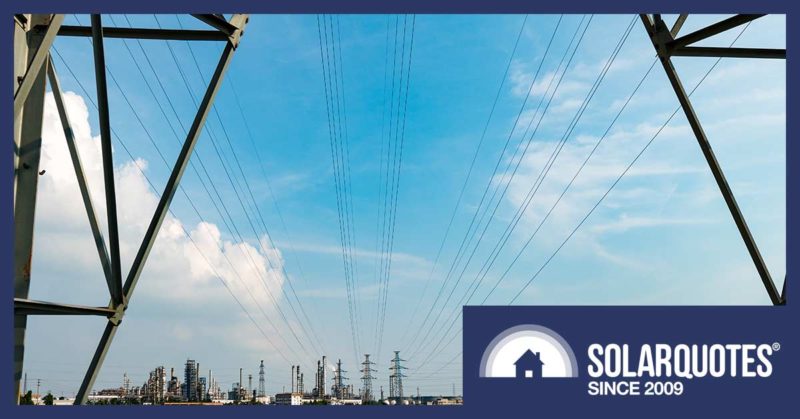EV Powers House: Australia’s V2G Bidirectional Charger Trailblazer
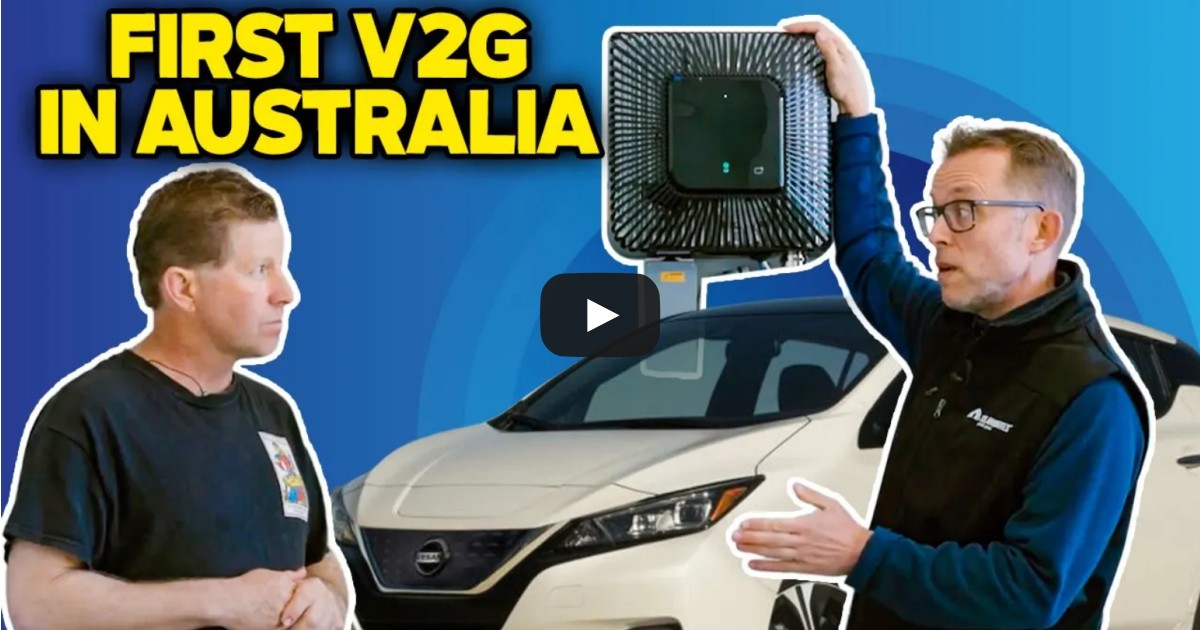
Exclusive! An in-depth look at a pioneering bi-directional EV charger installation in South Australia. V2G is exciting stuff, but some surprising limitations are revealed.
Following on from my initial report on Friday, SolarQuotes founder Finn Peacock gets into the nitty-gritty of this milestone V2G EV bi-directional charger installation for a Nissan Leaf. Along with a rooftop solar power and battery system, the electric car and charger are helping to power a home and business in SA’s Barossa Valley.
Set-up costs, technical specifications, battery warranty implications, EV battery use clarifications and limitations are covered; and much more.
— Transcript begins:
Finn: We’re at what we believe is the first bi-directional charger install on a residential or commercial property in Australia; and we’re at Ballycroft Wines in the beautiful Barossa Valley here in South Australia.
V2G – What You’ll Need
Finn: Now, if you’re chomping at the bit to get bidirectional charging at your home or commercial property, there’s three things you need to line up.
One, you need a car that’s capable of V2G. So, this is a Nissan Leaf Gen 2. It’s one of the few electric cars in Australia that can do that.
Secondly, you need a bidirectional charger like this Wallbox Quasar. There’s another one in Australia that we know of, which is the Delta V2X. And these babies start at about $10,000 plus installation.
And the third thing you need, which is probably the hardest, is you need permission from your local electricity network to connect the whole shebang to the grid. Joseph engaged Jet Charge, who’s the distributor of the Wallbox, and they worked with SA Power Networks to get permission and line up all the technical stuff. And it took three years to get that permission.
So, let’s now talk to the owner, Joseph – who’s had this all installed for only three months – about why he bought it, what it cost and how it’s going. Joseph’s claim to fame, apart from having the best wine in Australia, is, tell me if I’m wrong; you’ve got the only vehicle to grid charger installed in South Australia.
Joseph: That’s correct. And we installed it about three months ago. SA Power Networks in South Australia is the first network to have it approved is the reason we are one of the first, which is great for South Australia.
Joseph’s V2G Setup – Specs And Limitations
Finn: Okay, so let’s go through some technical specs. The Nissan Leaf Gen 2 has a 40 kilowatt-hour battery in it?
Joseph: Our car is a 40 kilowatt (hour) battery. You can now purchase a 65 kilowatt (hour) from Nissan at the moment, but ours is 40 kilowatt (hours).
Finn: This is a Quasar, a Wallbox Quasar bidirectional charger. This will charge and discharge at 7 kilowatts?
Joseph: At pretty much 7.2 kilowatts. You can charge the car through the CHAdeMO plug and discharge at a maximum of 7.2 kilowatts; and at a minimum of about 1.2 kilowatts.
Finn: So that’s really important for people to realise there is a minimum discharge from the car.
Joseph: Yes, that’s correct. That’s when you are running with V2H. This has the ability to do V2H and V2G. And you can adjust that with your phone. With V2G, you’re not just putting power on the grid, which most people think. V2G, it powers your house first and any extra not being used goes back onto the grid. Where V2H only draws from the car what has been used from the house. But you have to be drawing more than 1.2 kilowatt.
Finn: Yeah, that’s really interesting. So if your house is pulling less than 1.2 kilowatts overnight, which most houses would, and you’ve got one of these; you could still use it, but you’d have to put the excess going up to 1.2 kilowatts back into the grid.
Joseph: Back into the grid, which is not a problem.
How The Nissan’s Leaf Battery Is Being Used
Joseph: There’s power companies now that are paying a lot extra at night-time now for feed in tariff up to 18 to 20 cents per kilowatt (hour) to feed in between six o’clock and nine o’clock at night at peak.
Finn: So are you taking advantage of any of those?
Joseph: No, I’m primarily using my car to discharge at peak between six o’clock and nine o’clock at night. While you are cooking, you’re running the air conditioner, to warm the house at the moment. Summertime you’d be chilling.
Nine o’clock we turn it off and then turn the car off. In the morning, you want to have a little bit of power left to get to where you’re going the next day. We don’t use it every night. If we happen to be driving to Adelaide, which happens to be from here a 170 kilometre round- trip, we won’t use the car over that particular night. Because we need the power for the next morning.
Finn: How much of the car battery do you generally drain at night?
Joseph: On average at this time of year we are draining about 20 kilowatts.
Finn: 20 kilowatt-hours overnight.
Joseph: So we’re staying within the 80% of and 20% of low charge. We’re only setting it between two and three kilowatts; because that’s all we are using.
EV Battery Degradation And Warranty
Joseph: And with that, you’re not really degenerating the battery so much because you are not fast charging it and discharging it at 50 kilowatts an hour, which the CHAdeMO plug has the ability; and that really just degrades the battery over time.
Finn: Are you worried about degrading the battery faster because you’re using its power?
Joseph: No, I’m not, because Nissan Leaf offer an eight year warranty on the battery and a five year warranty on the car. Nissan, using a Wallbox V2G converter, the warranty is covered. The battery of the car is covered using the system. Which is by Nissan Australia. And and you are right. If you’re looking at purchasing a new car, having V2G capabilities in the future is something you can consider before purchasing your next electric car.
Finn: Interestingly – cuts out all the Teslas at the moment. Tesla has great cars, but for some reason they’re refusing, at the moment, to enable V2G on them.
Load Performance
Finn: So will it match the load of your house?
Joseph: Easily. We are a small winery. We do about 10 tonne of fruit a year. Right in the middle of vintage, we would not pull more than seven kilowatts. That’s a lot of power.
Finn: So if, if this complex is pulling say 5.2 kilowatts, will the Wallbox automatically pull 5.2 kilowatts from the battery; or do you have to set that?
Joseph: No, it can automatically discharge 5.2 kilowatts.
Finn: So just like a normal home battery, it just discharges what it needs to.
What Everything Cost
Finn: Can we talk money, how much everything costs?
Joseph: Okay. Our Nissan Leaf cost, on road, $52,000. The Quasar V2G converter cost $10,000 plus GST – $11,000. And cost about $1,500 to install. But we had to run a lot of cables to get to my meter box, which is a long way away. Installation could run anywhere from $800 to $2,000.
Finn: Did you have trouble finding an installer that was happy to do one of these?
Joseph: Luke Cartright, a local electrician, he put in my two Tesla car charging stations five years ago and Luke Cartright was really up with this kind of technology.
How It All Works – And Blackout Capability
Finn: So, Joseph, can you show me how it works?
Joseph: No problem. So simply plug in the CHAdeMO plug. And as you see it’s set at about 25 amps discharge. It’s clicked in, it’s now charging the car at – I’ve only got it set at at eight amps.
Finn: So, the electricity is now going from your solar, through the Wallbox; ah -you can hear it’s just kicked in.
Joseph: And then basically if you have a look at this, we can wind that round to discharge.
Finn: So, the amps have just gone from positive to negative. So, negative amps means the electricity’s now flowing out of the car or will be soon; into the home.
How much solar have you got on the roofs here?
Joseph: So, we have 33 kilowatts of solar. Because that’s the maximum you could have with three phase.
Finn: Could this backup the house?
Joseph: If the power’s off with SA Power Networks – this unit will not work at all with the power off. But the the new Quasar V2G 2, the second generation of this, will have the capability of working when the power is off. And they could be available in Australia in about one to one-and-a- half years.
Added note: Joseph also has a BYD battery and Fronius Gen24 system for backup given the Wallbox setup isn’t able to do this.
Finn: Well done Joseph on being an absolute trailblazer, because everyone I speak to is interested in V2G and V2H. And well done for having the persistence to work with SA Power Networks over three years to get permission to put this in; so others can follow your lead. Well done mate.
Joseph: Thanks to Nissan, JET Charge for all the work they’ve done, and without question, and Wallbox; because this will be your game changer.
— Transcript Ends
Related: Discover everything you need to know about EV charging, and the role home solar power can play. Need a home charging solution? Get quotes for EV chargers from installers Finn has pre-vetted and trusts. And for more great videos on everything solar power related, check out and subscribe to the SolarQuotes Youtube channel!
Original Source: https://www.solarquotes.com.au/blog/v2g-bidirectional-installation-mb2766/

